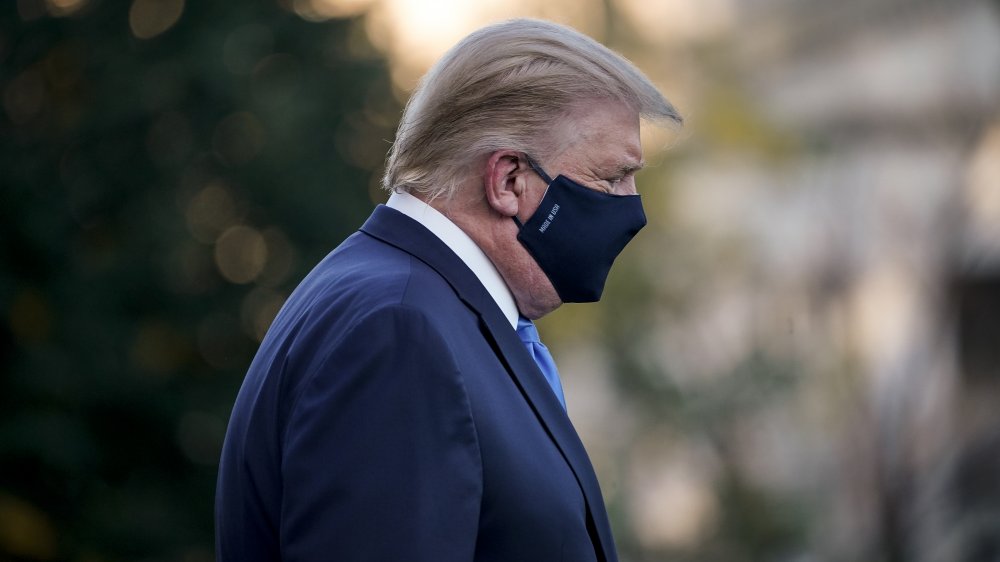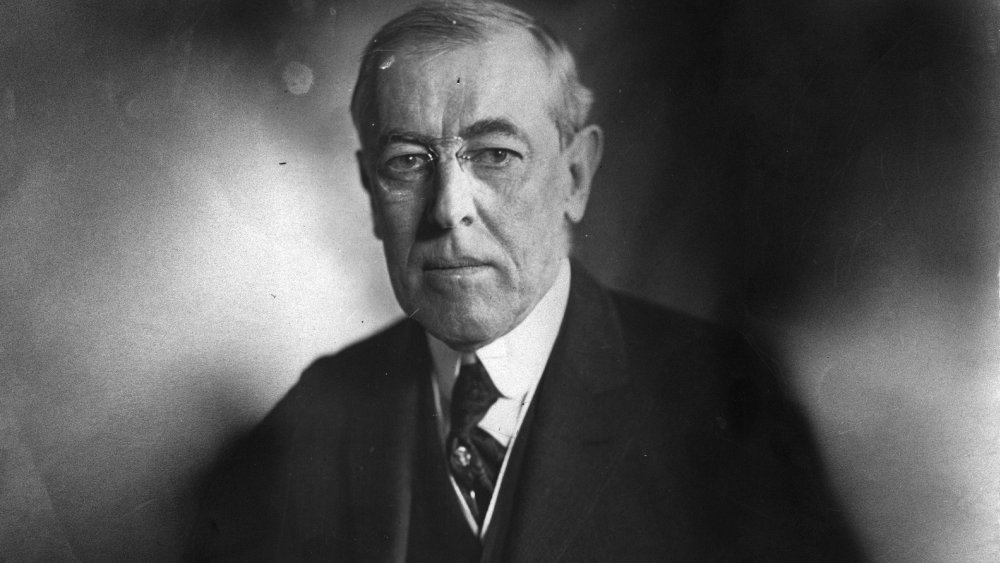Trump Isn't The Only US President To Downplay A Pandemic And Get Infected
Trump's recent COVID-19 diagnosis has prompted many Americans to recall the numerous times he has downplayed the severity of the pandemic and brushed off warnings from health officials. According to NPR, when the Centers for Disease Control and Prevention confirmed in January what they believed to be the first U.S. case of the coronavirus, Trump reportedly said, "We have it totally under control. It's going to be just fine." Four months later, when the CDC recommended that people wear masks in public, Trump gave a half-hearted comment on the subject, saying, "You can do it. You don't have to do it. I'm choosing not to do it, but some people may want to do it, and that's okay. It may be good. It's only a recommendation." And at a campaign speech in Ohio last month, Trump claimed the virus "affects virtually nobody."
Comments like these paint a very different picture from the reality of a virus that has now killed more than 1 million people worldwide and over 208,000 people in the U.S. (via The New York Times). Indeed, President Trump claimed he downplayed the virus in order to avoid creating "panic" and admitted he liked doing so (via NPR). While so much about these circumstances seems unprecedented, surprisingly, the country has been here before. Trump is not the first president in U.S. history to make light of a pandemic and wind up infected by it.
Woodrow Wilson understated a global pandemic
In 1918, during the first World War, the Spanish Flu emerged among American troops as a new, unknown respiratory virus that eventually spread into a worldwide pandemic, killing 675,000 people in the U.S. (via CNN). Similar to how the coronavirus upended our world this year, the Spanish Flu all but shut down normal operations of the country 100 years ago. With victims experiencing symptoms such as bleeding from the nose, mouth, ears, and eyes, and a high mortality rate among young people, healthcare systems were overwhelmed. However, the nation's president at the time, Woodrow Wilson, stayed silent on the matter.
Author John M. Barry, who wrote The Great Influenza: The Story of the Deadliest Pandemic in History, said, "Wilson never made a public statement about the pandemic. Never." In order to keep morale up during the war, Barry said the government lied, adding, "National public health leaders said things like, 'This is ordinary influenza by another name.' They tried to minimize it. As a result, more people died than would have otherwise." Then, in 1919 while negotiating peace talks in Paris, Wilson himself contracted the virus.
Woodrow Wilson's symptoms of the Spanish Flu began as a cough and progressed into hallucinations. All the while, his administration remained tight-lipped, even though several members of his staff also contracted the virus. According to USA Today, Wilson recovered from the virus but was reportedly never the same. Sixth months later, he suffered a stroke that left him partially paralyzed and blind, and he passed away in 1924, three years after leaving his office as President.

